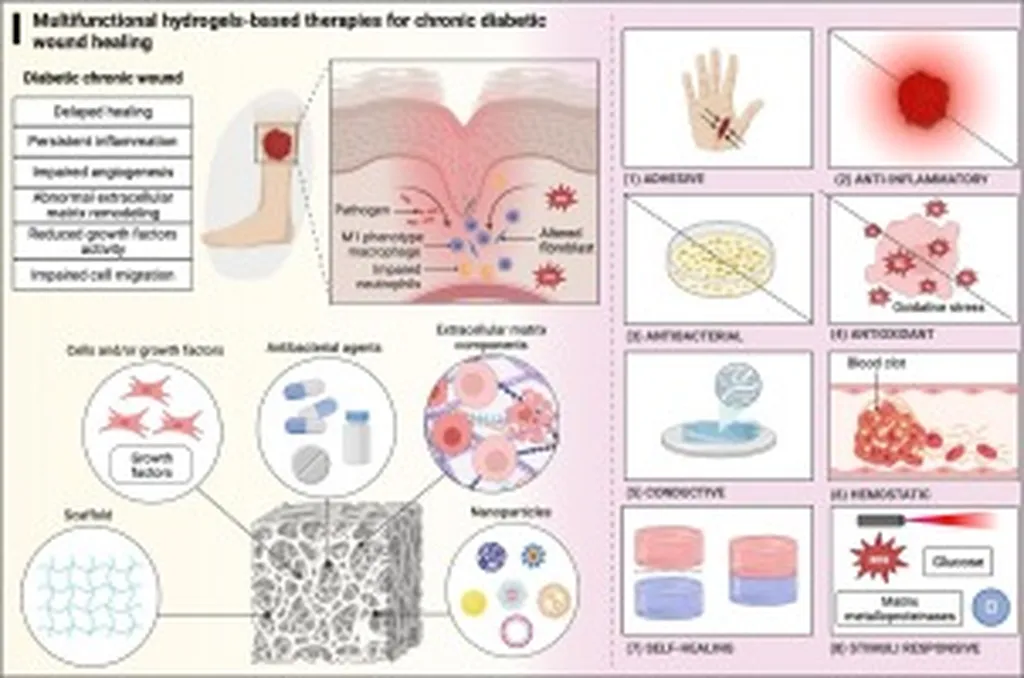In the realm of diabetic wound care, a groundbreaking advancement has emerged from the labs of Peking Union Medical College Hospital, promising to revolutionize treatment approaches. Researchers, led by Xiaozhen Zhou from the Department of Plastic and Aesthetic Surgery, have developed a sprayable hydrogel sponge that not only reconstructs the neurovascular microenvironment but also modulates inflammation, offering a comprehensive solution for chronic diabetic wounds.
The innovative hydrogel, dubbed S-GPL, is a blend of gelatin methacryloyl and methacrylamide-modified ε-poly-L-lysine, co-functionalized with VEGF-mimetic peptide (KLT) and BDNF-mimetic peptide (RGI). This unique formulation addresses the triad of challenges in diabetic wounds: chronic inflammation, vascular insufficiency, and peripheral neuropathy. “The sprayable format allows the hydrogel to conform to irregular wound geometries, while the pneumatic spraying technique creates a porous structure that enhances exudate absorption and sustained peptide release,” explains Zhou.
The hydrogel’s dual functionality is a game-changer. In vitro studies demonstrated that KLT promotes endothelial cell maturation and cytokine secretion, while RGI enhances Schwann cell activity. Moreover, the hydrogel facilitates intercellular interactions between rat Schwann cells (RSCs) and human umbilical vein endothelial cells (HUVECs), underscoring its potential in neurovascular communication.
In a full-thickness diabetic wound model in rats, the hydrogel accelerated wound closure, re-epithelialization, and matrix remodeling. It also promoted neovascularization and axonal regeneration, leading to the formation of a spatially organized neurovascular niche. “The hydrogel’s intrinsic anti-inflammatory properties suppressed the IL-17 signaling pathway, further contributing to its therapeutic effects,” Zhou adds.
The implications of this research are profound. The hydrogel’s ability to reconstruct the neurovascular microenvironment and modulate inflammation presents a novel strategy for diabetic wound management. As the global prevalence of diabetes continues to rise, so does the demand for effective wound care solutions. This innovation could significantly impact the healthcare sector, offering a more efficient and comprehensive treatment option for chronic diabetic wounds.
Published in the journal *Bioactive Materials* (translated to English as “活性材料” in Chinese), this study opens new avenues for future research and development in wound care technologies. The potential for commercialization is substantial, with the hydrogel’s unique properties positioning it as a promising candidate for clinical translation.
As the field of regenerative medicine continues to evolve, this research serves as a testament to the power of interdisciplinary collaboration and innovative thinking. It not only advances our understanding of diabetic wound healing but also paves the way for future developments in neurovascular regeneration and inflammation modulation. The journey towards improved diabetic wound care has taken a significant leap forward, thanks to the pioneering work of Zhou and their team.

